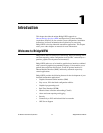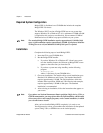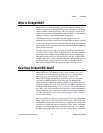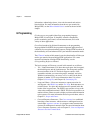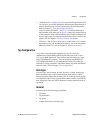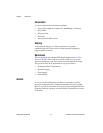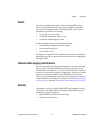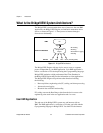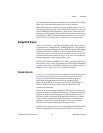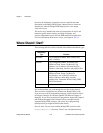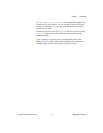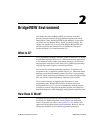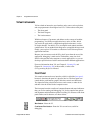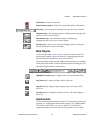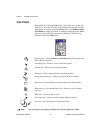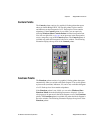
Chapter 1 Introduction
© National Instruments Corporation 1-9 BridgeVIEW User Manual
withthe BridgeVIEW Engine to read and write tag values, acknowledge
alarms, access historical data, and read and write tag attributes.
BridgeVIEW makes development of operator graphic displays easy and
fast. Floating palettes provide controls and functions necessary to develop
effective HMI and SCADA applications. The Controls palette provides a
number of predefined objects, selected from the automation symbol library,
for building your HMI. The Functions palette provides a set of functions
and VIs you can use for I/O, analysis, historical data, and networking.
BridgeVIEW Engine
The BridgeVIEW Engine is the heart of the BridgeVIEW System. It runs as
a separate process, independent of your HMI application. This minimizes
interference between the Engine and your HMI. The BridgeVIEW Engine
maintains the Real-Time Database of all tag values and alarm states. It
reads values from the various device servers. These values are scaled and
compared with their alarm limits. If a tag is in an alarm state, the Engine
generates appropriate events and logs them to disk.
The Real-TimeDatabase (RTDB) is an in-memory snapshot of the state of
all tags in the system. If a tag value changes more than its update deadband,
or its alarm state changes, the RTDB is updated. Along with tag values, the
RTDB also stores status, date, time, and alarm information.
Device Servers
A device server is the application that communicates with the I/O devices
such as PLCs and plug-in cards. Several National Instruments device
servers are written to a National Instruments standard client/server
Application Programming Interface (API) for the BridgeVIEW
Engine.BridgeVIEW also communicates with OPC and DDE Servers.
There aredifferent servers for different device manufacturers and
communication networks.
The device servers that support the BridgeVIEW Engine are stand-alone
programs launched by the BridgeVIEW Engine, and thereafter run in the
background, reading selected input items and writing them on demand.
Each server either is configured by BridgeVIEW when tags are created,
orhas a specific configuration utility that determines communication
parameters, I/O poll rates, and device addresses. A server completes
operation only when the BridgeVIEW Engine shuts down.
Input items are polled by servers at a rate determined by the BridgeVIEW
I/O groupconfiguration. For each input item, the device server passes



